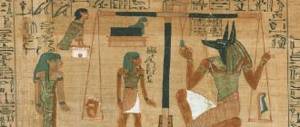Lesson summary “Culture and Religion” on ORKSE (grade 4)
LESSON SUMMARY
on the topic “Culture and Religion”
module “Fundamentals of World Religious Cultures” of the ORKSE course
Compiled by Liliya Gelfinatovna Yunasova, GBOU School No. 1383
A.L. Beglov, E.V. Saplina, E.S. Tokareva, A.A. Yarlykapov. Fundamentals of the spiritual and moral culture of the peoples of Russia. Foundations of world religious cultures. 4-5 grades. – M.: Education, 2012.
4th grade
Foundations of world religious cultures
Lesson topic: Culture and religion (lesson 2).
The purpose of the lesson: to help students understand the essence of culture, its main forms, the relationship between culture and religion.
Lesson objectives:
Educational:
education of morality, tolerance, the ability to listen to the opinions of classmates without interrupting each other; education of speech culture; aesthetic education; instilling trust and respect for the history and culture of different peoples through familiarization with the concepts of “culture” and “religion”.
Educational:
reveal the concept of “culture”, consider the influence of religion on culture, reveal the essence of material and spiritual culture, the formation of concepts: culture, religion, material culture, spiritual culture;
Educational:
through game moments and group forms of work, promote the development of students’ mental activity, perform creative tasks, compare material and spiritual culture; speech development, replenishment of children’s active vocabulary.
Planned results:
— Subject results:
- formation of initial ideas about culture and religion;
- determining the essence of material and spiritual culture;
- formation of ideas about the influence of religion on culture.
— Meta-subject results:
1) educational:
- mastering the logical actions of analysis, synthesis, comparison, generalization, classification, establishing analogies and cause-and-effect relationships, constructing reasoning, referring to known concepts;
2) regulatory:
- take into account the action guidelines identified by the teacher in the new educational material;
- determine the degree of novelty and importance of educational material.
3) communicative
- willingness to listen to the interlocutor and conduct a dialogue;
- recognize the possibility of the existence of different points of view and the right of everyone to have their own opinion.
— Personal results:
- formation of an image of the world as unified and holistic with the diversity of cultures, nationalities, and religions;
- fostering respect for the history and culture of all peoples.
Basic terms and concepts of the lesson: religion, culture, spiritual culture, material culture.
Information and educational environment:
- multimedia complex,
-presentation “Culture and Religion”,
-textbook by A.L. Beglova, E.V. Saplina, E.S. Tokareva, A.A. Yarlykapov “Fundamentals of the spiritual and moral culture of the peoples of Russia. Foundations of world religious cultures". 4-5 grades. – M.: Education, 2012.
During the classes:
1.Organization of student activities.
- Hello guys! Today we will continue to understand the concepts of culture and religion (slide 1). We have a lot to learn and remember.
So today we will (slide 2):
-find the necessary information (definition of the concept “culture”),
- analyze the information received,
-discuss, exchange opinions, prove your point of view,
-remember what was learned in previous lessons and summarize.
2. Updating knowledge.
Slide 3: crossword puzzle
Let's remember what we already know.
- Now we will guess... (crossword puzzle).
- What is people's participation in religious activities called? (ritual)
- In ancient times, the main part of the ritual was making sacrifices to the gods. Later, the main rituals became... (prayers).
- What are the names of such religions, whose believers belong mainly to one people? (national).
- What does the word religion mean in Latin? (unite).
- What is the name of the national religion of the Hindus? (Hinduism)
- This word comes from a Latin word that means “to bind”, “to unite” (religion).
- Christianity, Islam, Buddhism and Judaism - these 4 religions are considered ... (which) religions of Russia? (traditional).
3. Preparation for studying new material.
— What word came out as a result of solving the crossword puzzle? (CULTURE) (slide 4)
— The word CULTURE is associated with the phrases “culture of behavior”, “culture of communication”, “cultural heritage”, etc. Let's think about these concepts (student statements).
— Group task: continue the phrase: “A person who... is a cultured person” (slide 5) (work in groups, defend your answers).
— Let’s generalize: a cultured person not only knows a lot and knows how to behave, he owns the cultural heritage of not only his people, but also the world’s cultural heritage. A society that does not know its culture has no future. Why do they say this?
4. Studying new material.
So what is culture?
— There is no unambiguous definition of the concept of culture. First, let's try to figure it out ourselves.
— Let's try to compare the culture with our land. If you take care of the land, cultivate it, water it, fertilize it, what will happen?
- It's the same with culture.
- What will happen to the land if you don’t care for it, don’t fertilize it, don’t cultivate it? Yes, she will die.
Culture, like the land, needs care, care, there must be human activity, the transfer of experience (and without it there is no way), traditions.
Read the definition of culture in our textbook (p. 8):
— Culture is the material and spiritual values that people create throughout their history.
(slide 6).
- Is this what we said? Yes, not in such scientific language, but more understandable, and about this.
— From this definition we can immediately learn that there are different types of culture?
- material,
- spiritual (slide 7).
Working with textbook text.
- Copy examples of material and spiritual culture from the textbook on p. 8.
Drawing up a diagram on the board.
Let's try to create a portrait of the word CULTURE (slide 8).
- Choose words-friends (development, education, etc.)
- Words are enemies (bad manners, evil, etc.)
- Collocations with this word (culture of communication, culture of speech, cultured person, culture of behavior, cultural heritage, etc.)
- Associations
- (Slide 9) Proverbs (
Culture is a great teacher of how to live. The higher the culture, the higher the value of work.) Explain their meaning.
— Which type of culture does religion belong to? (to spiritual)
-That’s right, religion refers to spiritual culture, but also in every religion it was necessary to have a special place for performing rituals (prayers, etc.). This is how temples appeared - special buildings for these purposes.
When people were building temples, they worked not only physically, but also spiritually: they built with love, with reverence for God. What happens? The temple was created by man, which means it is culture. Do you agree?
6. Teacher’s speech “The influence of religion on culture” (according to the text of the textbook)
For the existence of religion, a connection between material and spiritual culture is necessary; many monuments of material and spiritual culture arose in connection with religion.
Tourists still enjoy visiting the preserved majestic temples of Ancient India (slide 10) and Ancient Greece (slide 11). The Jerusalem Temple in Israel has not survived to this day, but is known from descriptions. Solemn Buddhist temples are found throughout Asia (slide 12). In ancient times, the first Christian churches arose, some of them have survived to this day (slide 13). The first Muslim sacred buildings were erected in the Middle East and North Africa (slide 14). Nowadays Buddhist, Islamic, and Christian temples can be found everywhere. Each temple has its own name. We will learn why they are called that in the next lessons.
Currently, these wonderful buildings are considered cultural monuments. They are protected by the state.
— What beautiful words can we choose to describe these temples?
— Is there a temple in our area? Where is he located? What is the name of?
— Church of St. Innocent Metropolitan of Moscow in Beskudnikovo (slide 15).
-Which of you was inside this temple? If desired, we can take a tour of this temple.
Painters of all times often turned to religious subjects in their paintings (slide 16). Buddhism and Christianity, as well as a number of other religions, use music during ritual ceremonies. Today we know a lot of musical works written both specifically for religious purposes and on religious themes and subjects.
— So, are culture and religion connected? How?
7. Primary generalization of the studied material
(slide 17)
— In the lesson we learned that culture is...
-Culture can be _____________________ and _____________________.
— We realized that religion influences (does not influence) culture.
– So, religion is a form of spiritual culture in which beauty, goodness, truth and justice find their expression - those spiritual values that a person should strive for in his creativity, in his culture.
8. Homework
Prepare a story about the monuments of material culture of our city or our region.
9. Reflection
– Guys, today we not only learned new things, learned to work with information, but also worked in groups. If your group worked together, completed all the tasks, managed to overcome all the difficulties, then join hands and raise your hands up as a symbol of friendship and cooperation.
– Thank you for your work in class!
Culture and religion. Lesson #3
№ lesson:
3
Subject:
Culture and religion
Target:
Formation in students of respect for world religions as values of human culture
Tasks:
Educational:
find out how culture and religion are connected; form an idea of the main world religions.
Educational:
develop speech, logical and associative thinking of students, promote the development of communication abilities, and the ability to argue their point of view.
Educators:
cultivate tolerance and respect for different religious cultures
annotation
: This lesson is the second in the module “Fundamentals of World Religious Cultures.” Lesson type – learning new material. The form of the lesson is a story with elements of conversation and using a Power Point presentation. The main types of activities of students: collective, group, individual.
Activities:
conversation, commented reading, creative story, work with illustrative material, independent work with sources of information, preparation of a creative conversation with family members.
Basic terms and concepts:
culture, religion, Orthodoxy, Islam, Buddhism, Judaism.
Equipment:
multimedia equipment (interactive whiteboard), presentation “Culture and Religion”, textbook “Fundamentals of World Religious Cultures”, workbooks.
Lesson Plan
- Organization of students' activities.
- Discussion of the results of homework.
- Updating students' knowledge.
- Commented reading of an article from a textbook.
Answering questions and completing tasks from the student manual.
- Selective retelling of the text (as instructed by the teacher).
Physical education minute.
- Summarizing.
- Reflection.
- Homework.
DURING THE CLASSES:
I
.
Organization of student activities
Greetings. Creating a positive emotional mood.
II . Discussion of homework results
Sample questions for students:
- What did you talk about with your family and friends?
- What new things have you learned?
- What particularly interested them in your questions?
- What do you think we will talk about today?
On your desks are cards with words (music, temple, education, architecture, Greek gods, goodness, sculpture from a Catholic cathedral).
Distribute all the words into two groups by topic:
CULTURE RELIGION
Slide 1.
In which groups did difficulties arise? Why? (words: Greek gods, sculpture from a Catholic cathedral can be attributed to each of the groups)
Why?
III . Updating students' knowledge.
The topic of the lesson is “Culture and Religion.” Slide 2.
Voicing the lesson topic, goals and objectives:
- Write down the topic of the lesson in your notebook.
Epigraphs for the lesson:
Slide 3.
“Culture is what remains when everything else is forgotten”
E. Herriot
You will learn:
- What is culture?
— How religion and culture are connected.
Teacher's story.
Additional material:
Slide 4.
Culture
is a complex concept that includes everything “human” in the world around us. This is everything that people do and the new things that we bring to the natural world. One of the consequences of such actions are beautiful works of art. But their main consequence is the development of man himself. And therefore, the most important thing in culture is the reasons why a person decides to commit such a uniquely human act.
Why does a person act this way and not otherwise? How do people distinguish between good and evil, truth and untruth? The answers to these questions are in the world of culture.
When we say “culture,” we most often assume that we are talking about fiction, libraries, visual arts, exhibitions, art galleries, museums, music, concerts, and performing arts.
Today the word culture is understood more broadly: it is generally everything that man has created. What a person changes in the world through his work is culture.
Culture accumulates the experience of human successes and failures. Through culture, this experience is transmitted from one people to another. Culture is created by people. And then this culture creates the living conditions of other people, influences the way they think and feel, the way they communicate and work.
People learn from each other not only at school. We learn to make friends, stand up for the truth, and love our loved ones not only in lessons. And this is also part of the culture.
How should a state or national holiday be celebrated? How to welcome a guest to your home? How to organize a wedding or cope with the loss of a loved one? These are also cultural issues. People absorb these rules, norms, and customs from the first day of their lives. A person usually does not choose his own culture. He is born in it, breathes in it, grows in it.
IV . View the presentation. Commented reading of an article from a textbook.
We will be attentive to every word of the text in order to comment on the ideas that we already have and add new knowledge.
Slide 5-19
V. _ Physical education minute.
VI . Reflection.
Draw a hand and write the words you learned in class.
VII. Summarizing.
So culture
- This is not only the area of art and aesthetics. Culture covers our entire life and helps us preserve everything that is beautiful, good and eternal.
Draw a butterfly of your mood that you still have after today's lesson.
VIII. Homework.
Give examples of spiritual and material culture



